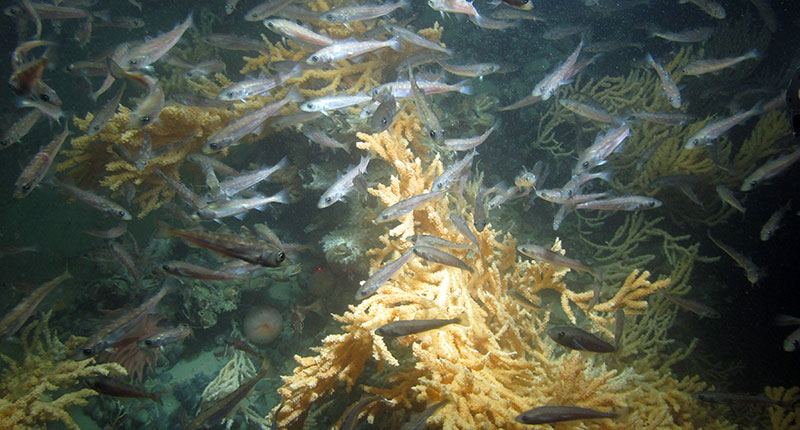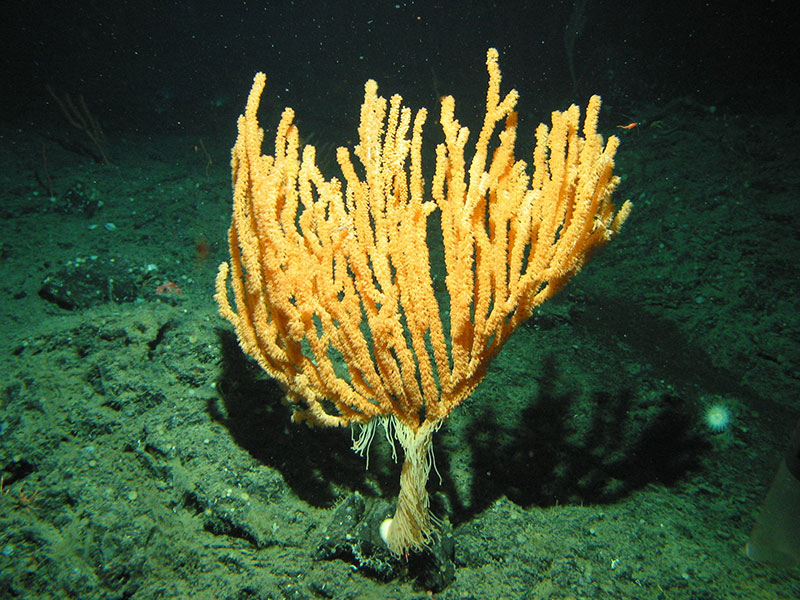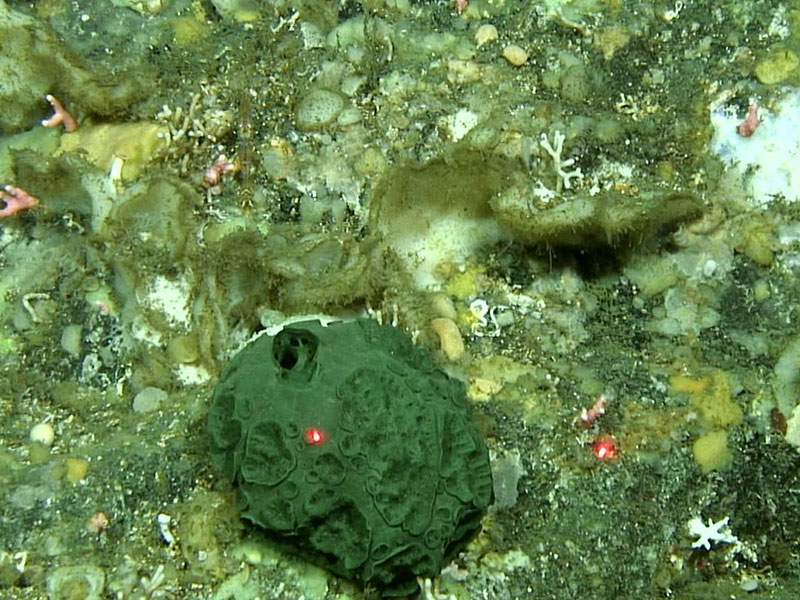Seascape Alaska 3: Aleutians Remotely Operated Vehicle Exploration and Mapping
(EX2304)
Summer Expeditions will Explore Widespread Deep-Sea Coral and Sponge Communities in Alaska
In 2023, a series of expeditions will help NOAA and partners to better understand the diversity and extent of ecologically important seafloor communities in the Aleutian Islands and Gulf of Alaska.

This summer and early fall, teams led by NOAA Ocean Exploration aboard NOAA Ship Okeanos Explorer will voyage off the coast of Alaska. They will complete a series of expeditions focused in part on deep-sea coral and sponge communities. You can watch this exciting work in real time on our remotely operated vehicle livestream!
These coral communities are widespread throughout most of Alaska’s marine waters. They provide important habitat for other organisms that live on or near the seafloor and may be a rich source of new medicines.
However, deep-sea coral and sponge habitats are vastly unexplored, particularly in the deeper waters off the Aleutian Islands and in the Gulf of Alaska. This year’s expeditions will likely uncover new deep-sea coral and sponge communities and possibly lead to the identification of new species. Exploring these seafloor ecosystems is important as it catalyzes further exploration and research, which can inform management activities.
The expeditions will contribute to the Alaska Deep-Sea Coral and Sponge Initiative, led by NOAA’s Deep Sea Coral Research and Technology Program. The program is the only U.S. federal research entity dedicated to increasing our scientific understanding of deep-sea coral ecosystems.
To the Depths of the Unknown


In Alaska, in situ footage from stereo cameras, remotely operated vehicles, and other submersibles have provided a glimpse of deep-sea corals and sponges in their natural environment. Scientists have also derived information about these organisms from samples collected as bycatch during fisheries research surveys in the region. Exploring and characterizing unknown habitats in the deep sea is challenging anywhere in the world. Alaska waters are especially hard to reach given their remoteness and the harsh environmental conditions.
On the upcoming expeditions, teams will collect hours of remotely operated vehicle footage and coral and sponge samples from previously unexplored areas of the seafloor. This work, and related studies, will improve our understanding of deep-sea coral and sponge geographic distribution, biodiversity, reproduction, and resilience.
Understudied and Vulnerable Habitats

Around the world, deep-sea corals and sponges create seafloor structures that act as shelter, feeding grounds, and nurseries for other invertebrates and fish. Some of these animals — such as flatfish, rockfish, and king crab — are commercially important.
In addition to being fixed in place, deep-sea corals and sponges are generally long-lived and slow growing. These characteristics make them particularly vulnerable to human activities and associated environmental change, including climate change.
In Alaska, researchers are particularly interested in red tree corals, which provide important habitat for rockfish and other marine species. These brightly colored corals form large branching tree-like structures and grow in dense thickets. Researchers are continuing to uncover more about red tree corals’ life cycle, geographic distribution, and capacity to recover from damage.
Deep-Sea Coral and Sponge Biodiversity
Deep-sea coral and sponge communities can be extremely diverse, particularly around the Aleutian Islands. Research suggests that this region is home to the highest diversity of corals in Alaska and possibly throughout the North Pacific. The region may even contain some of the most abundant deep-sea coral and sponge communities in the world — which is one of the reasons this expedition is so important.
In collaboration with NOAA researchers, Fisheries and Oceans Canada recently published a field guide to corals found off the coast of British Columbia and Alaska, including in international waters. The guide includes five orders, 31 families, and 153 species of corals documented in eastern North Pacific waters. Common names such as “carnation coral,” “toadstool coral,” “tentacled bamboo coral,” and “armored sea fan” give a sense of the incredible diversity of corals in Alaska’s waters.
For More Information
- NOAA Office of Habitat Conservation
- NOAA Deep Sea Coral Research and Technology Program
- NOAA Ocean Exploration: 2023 Seascape Alaska Expeditions
- NOAA Fisheries: Deep Sea Corals and Sponges of Alaska Story Map
By Dani Weissman, NOAA Fisheries
Published July 5, 2023